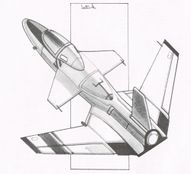Difference between revisions of "VoidSeeker"
m (spellcheck, case, citation/whitespace) |
(I get why you'd compare this unit to a landmine, but it's still a really awkward comparison) |
||
| Line 8: | Line 8: | ||
After the initial ''VoidSeeker'' design was created and deemed successful, engineers created two versions: The ''[[VoidSeeker Interceptor]]'' and the ''[[VoidSeeker Striker]]'' aerospace fighters.<ref>''Historical: Liberation of Terra Volume 1'', p. 175</ref> | After the initial ''VoidSeeker'' design was created and deemed successful, engineers created two versions: The ''[[VoidSeeker Interceptor]]'' and the ''[[VoidSeeker Striker]]'' aerospace fighters.<ref>''Historical: Liberation of Terra Volume 1'', p. 175</ref> | ||
| − | The ''VoidSeeker'' family was very successful and deployed in vast numbers, sometimes by the thousands, in areas that did not warrant the deployment of ''Caspars'' | + | The ''VoidSeeker'' family was very successful and deployed in vast numbers, sometimes by the thousands, in areas that did not warrant the deployment of ''Caspars.'' This included deep space naval installations and planetary systems of minor value. It was common for large numbers of these drones to be deployed along expected lines of contact. They would lie in wait in a passive listening mode, aggressively responding to all ships that failed to provide a correct IFF code. |
| − | + | Most ''VoidSeekers'' had been destroyed, deactivated or otherwise neutralized by the end of the [[Second Succession War]]. Any functional examples encountered after that were considered an unusual rarity, such as those found at [[Camelot Command]]. | |
==References== | ==References== | ||
Latest revision as of 18:04, 30 December 2023
The Mark 39 VoidSeeker Attack Drone is an automated defense system of the SLDF based on the (then experimental) F-90 Stingray aerospace fighter. Designed to work in conjunction with the much larger Caspar SDS drone WarShips, the VoidSeeker is capable of engaging fighter sized targets which the Caspars are unable to target with their naval size armament.
The VoidSeeker replaced the BlackWasp drone aerospace fighter and it can be speculated that, like the BlackWasp, the VoidSeeker could be launched from the Caspar drones or carrier satellites. The VoidSeeker is noted for having superior resistance to electronic warfare gear, compared to its predecessor.
The most notable feature about the VoidSeekers is that their sophisticated battle computers are capable of coordinating attacks with other VoidSeeker and Caspar units by forming a decentralized computer network, which allows the drones to collectively make tactical decisions. The advantages include preventing overcommitting drones against a single target, and the impossibility of neutralizing the defenders by taking out any central command unit. The VoidSeeker drones could also be slaved to a human controller.
After the initial VoidSeeker design was created and deemed successful, engineers created two versions: The VoidSeeker Interceptor and the VoidSeeker Striker aerospace fighters.[1]
The VoidSeeker family was very successful and deployed in vast numbers, sometimes by the thousands, in areas that did not warrant the deployment of Caspars. This included deep space naval installations and planetary systems of minor value. It was common for large numbers of these drones to be deployed along expected lines of contact. They would lie in wait in a passive listening mode, aggressively responding to all ships that failed to provide a correct IFF code.
Most VoidSeekers had been destroyed, deactivated or otherwise neutralized by the end of the Second Succession War. Any functional examples encountered after that were considered an unusual rarity, such as those found at Camelot Command.
References[edit]
- ↑ Historical: Liberation of Terra Volume 1, p. 175



